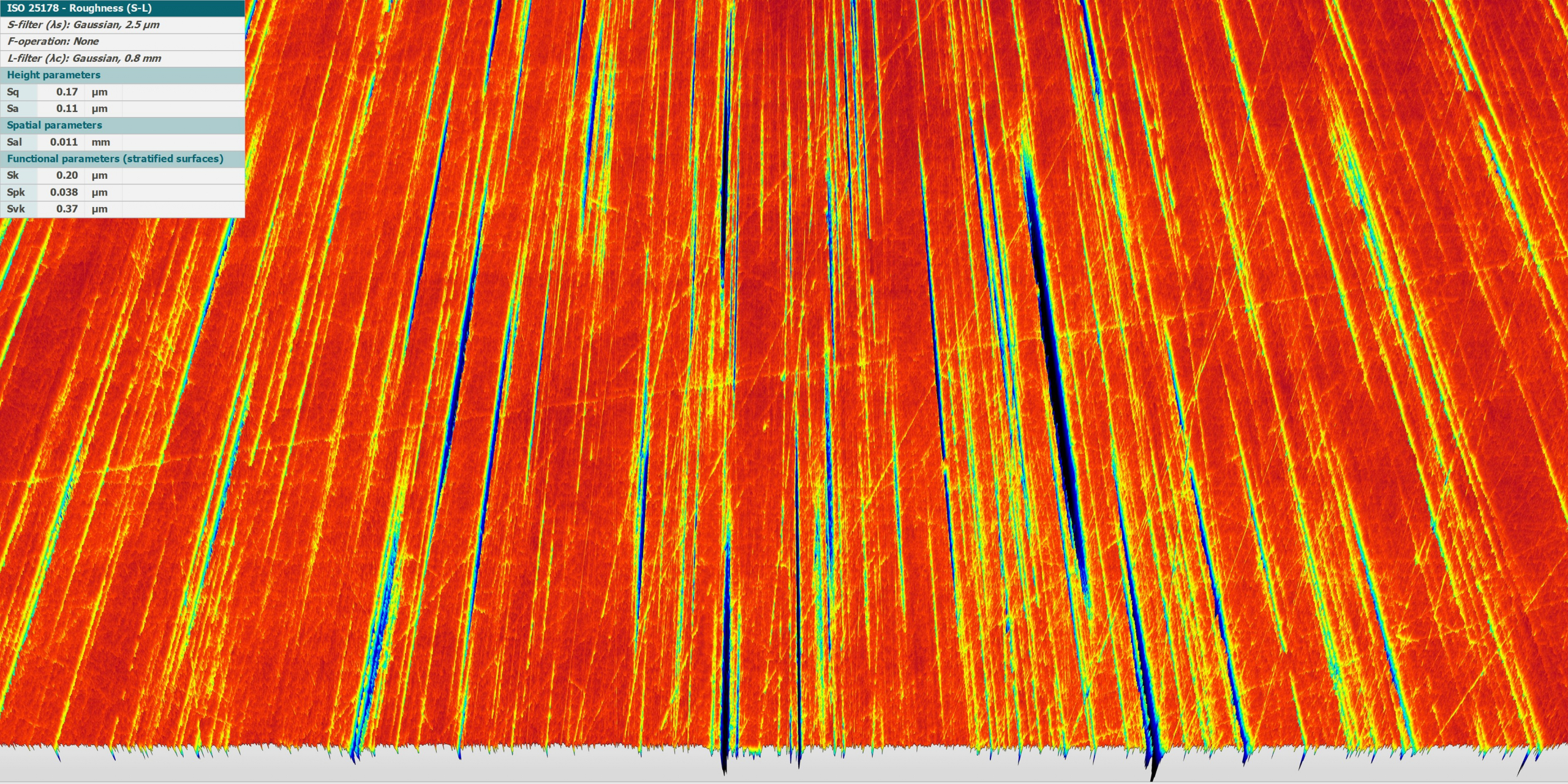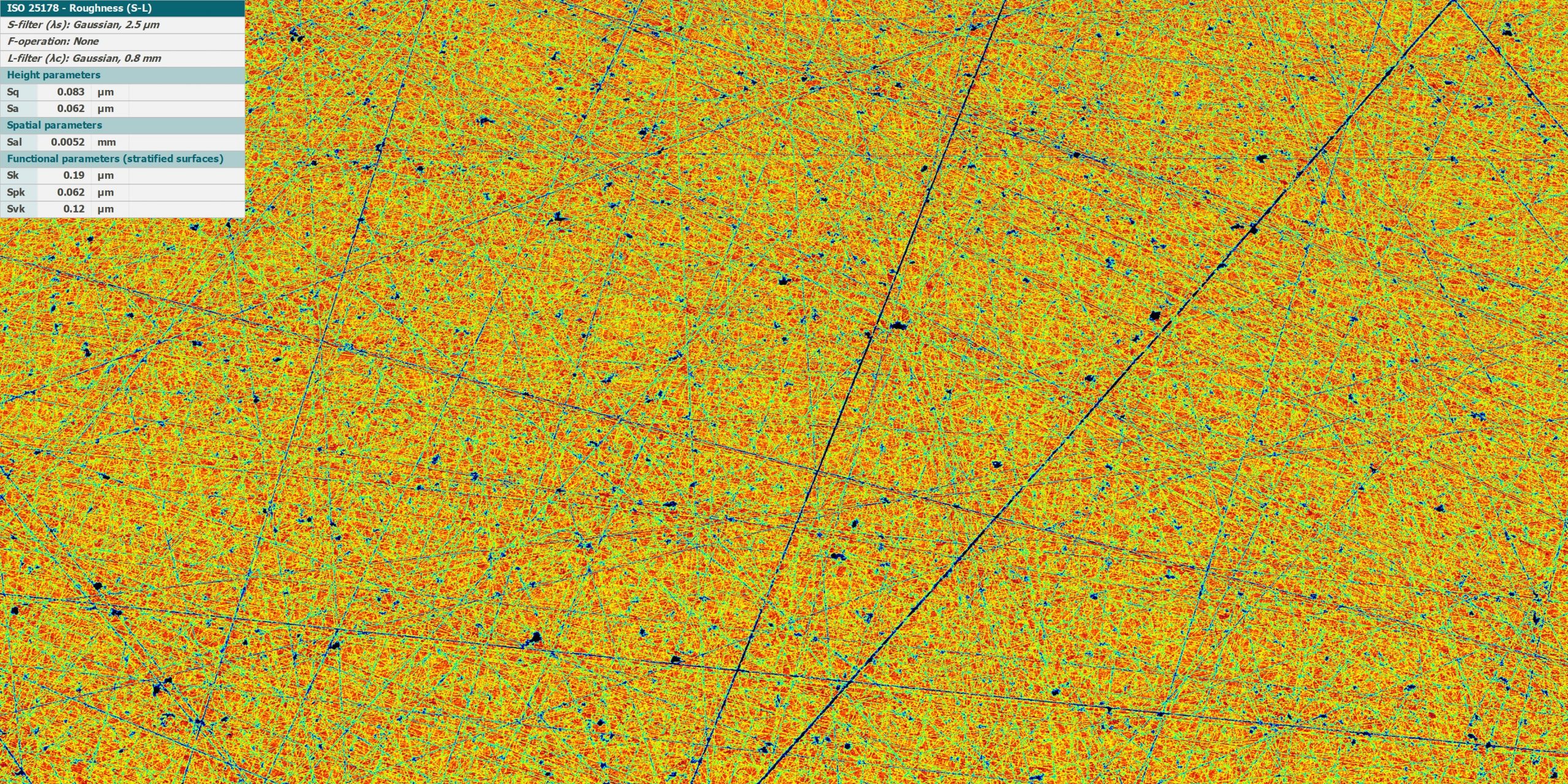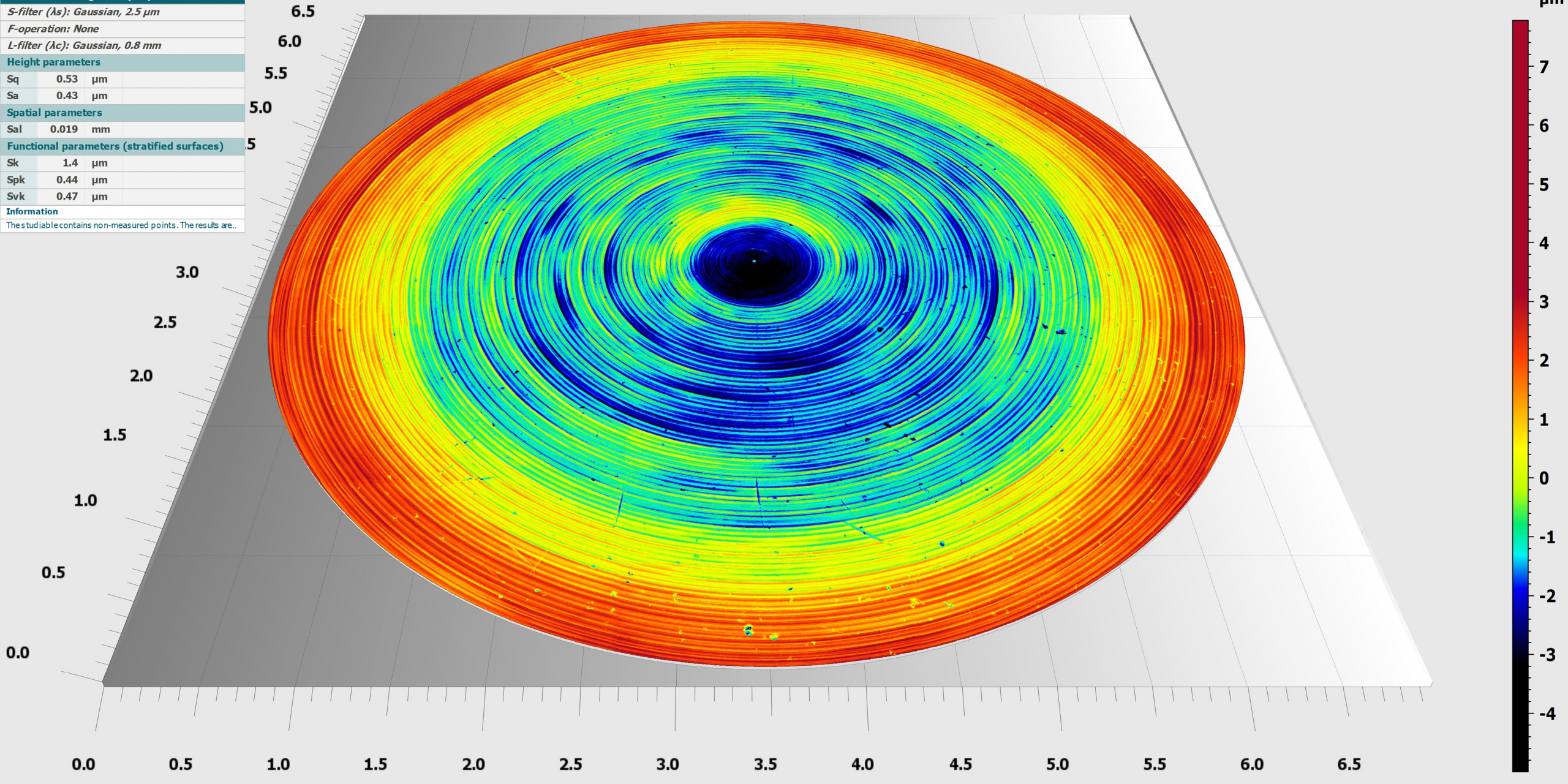Machined Surfaces
| Roughness measurements of machined surfaces are one of the most important measurement tasks for profilometers. Most surfaces have roughness’s of Ra 0.1 – 2 µm. According to ISO EN 21920, the measurement of these surfaces (Group Sc3) requires a standard measuring point distance of less than 0.5 µm and a profile length of 4 mm. It is also important that the measuring device used has a real resolution that corresponds to that of a stylus with a radius of 2 µm. While all 3D sensors in the smartWLI series have sufficient height resolution, at least 20x lenses should be used to achieve sufficient lateral resolution. An alternative is 50x lenses with subsampling. This means that the surface can be measured with sufficient resolution almost as quickly as with 20x lenses. In case of doubt, however, a significantly higher resolution can be achieved with full resolution than is the case with tactile measuring devices. |
Don’t measure just anything.
Measure what matters.
You can download a different number of files. Select one or more files to download.

Ground surfaces are relatively rough. Therefore, it is sufficient to use more affordable sensors without piezo positioners.
For the measurements, 20x or 50x objectives should be used to achieve the necessary resolution for measuring such finely structured surfaces.

Flat finishing of ground surfaces removes the peaks while leaving the valleys largely unchanged.
This process drastically alters the functional properties of the surface.
The change is visible in the material ratio curve and can be significantly evaluated using surface parameters such as Spkand Svk.

Polishing processes can produce very smooth surfaces with extremely fine structures.
When evaluating such surfaces, the use of 50x objectives may be necessary, and for roughness values below Ra 5 nm, the use of high-resolution sensors with piezo actuators may be required.

The material thickness is critical for the function of the membrane, and local scratches can impair its performance.
On the one hand, 20x objectives are used for roughness measurement according to ISO 21920; on the other hand, objectives with significantly lower magnification, such as 2.5x, are employed for quick 100% inspection of the components for surface defects (scratches).